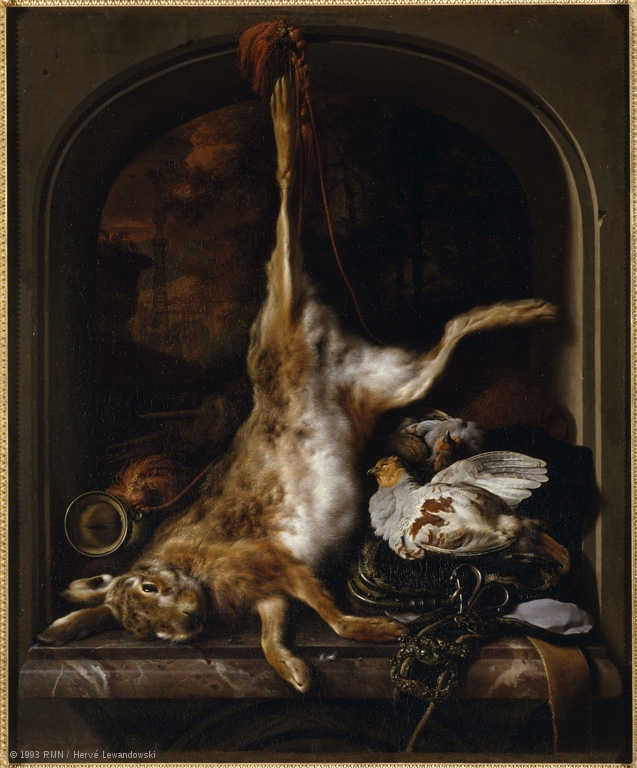Edouard Manet once called still life “the touchstone of painting.” Characterised by an interest in the insentient, this genre of art has been popular across movements, cultures, and periods, with major figures like Paul Cézanne and Pablo Picasso sharing the Impressionist artist‘s view.
STILL LIFE: nature morte; A still life pictorial is a painting/drawing/photograph is a piece that features an arrangement of inanimate objects as it’s subject. Traditionally these items would be set on a table and would often include organic items such as fruit and flowers, as well as household items such as glassware.
The term “still life” is derived from the Dutch word stilleven, which gained prominence during the 16th century. While it was during this time that the still life gained recognition as a genre, its roots date back to ancient times.

Pieter Claesz, ‘Vanitas – Still Life’ (1625)
Ancient History
Still-life as an art form first originated from Ancient Egyptian highly codified mortuary rituals. Egyptians at the time believed that objects represented on the walls of a tumb or inside a sarcophagus would accompany the dead in the afterlife. Greek and Romans later realised similar types of paintings though they did not associate any religious symbolism to it anymore. However, unlike Egyptian frescoes which were not using any perspective or shading, Greek and Roman started to develop a somewhat sophisticated form of still-life ar, more realistic and detailed.
Socio Economic Background:
The creation of the Dutch Republic caused a rise in having great pride in national identity and it came with a delight in the new art that was uniquely Dutch. As the economy flourished, and the trade with the Indies and South America grew so did the fashion for collecting, the popularity of painting in general, and Still Life (Stilleven) in particular.
As a result of this trade with far-flung places and the introduction of exotica, Dutch artists of the 17th century became renowned for being greatly concerned with what Kahr refers to as a: ‘close scrutiny of the natural world.’ This, combined with their preoccupation with perspective and the study of light, provided the basic elements of Still Life painting. The term had come into general usage in mid-century, Still Life being the carefully composed portrayal of inanimate objects.
RENAISSANCE
Northern Renaissance artists popularized still life iconography with their flower paintings. These pieces typically showcase colorful flora “from different countries and even different continents in one vase and at one moment of blooming” (Metropolitan Museum of Art) and often do not feature other subject matter. These paintings rose to prominence in the early 17th century, when Northern Renaissance artists grew increasingly interested in creating realistic studies of everyday items.
DUTCH GOLDEN AGE
Dutch Golden Age artists took this interest in detailed floral art a step further with their vanitas paintings. Vanitas paintings are inspired by memento mori, a genre of painting whose Latin name translates to “remember that you have to die.” Like memento mori depictions, these pieces often pair cut flowers with objects like human skulls, waning candles, and overturned hourglasses to comment on the fleeting nature of life. Unlike memento mori art, however, vanitas paintings “also include other symbols such as musical instruments, wine and books to remind us explicitly of the vanity of worldly pleasures and goods”
https://www.tate.org.uk/art/art-terms/s/still-life
Image Analysis:
Jan Baptist Weenix painted a wide range of subjects: landscapes, still life, genre scenes, history paintings. During the early part of his career he painted Italianizing scenes in the style of his father, before achieving a reputation as a talented painter of game, both living and dead. Weenix went on to become one of Holland’s most celebrated painters of hunting still-life.
Hunting still-lives, clearly, differ from everyday kitchen and table scenes, contextually they highlight an important aspect of the lives of a highly privileged social class. Hunting trophies such as this were often painted for the townhouse or castles of wealthy parsons. In this way aristocratic parsons were able to advertise their passion for hunting. Designed to impress, depictions of the game, together with game bags and other accessories, in sophisticated, luxurious settings, were seen as potent symbolic expressions of aristocratic wealth, pride and landownership.
As with Weenix’s paintings of game, and other hunting still lifes of the time, an animal (in this painting a hare) is shown hanging by one of its back legs with its head down, as a trophy. The motif is directly related to the practice and customs of hunting with dogs. Here the hare is hung from the top of an arched window frame seeing out to a landscape. The animals head and legs are resting on a marble ledge and to the right lie two partridges on top of what could be a game bag. To the left of the hare what seems to be a type of hunting horn is seen to be sticking out. The colour scheme of dark warm tones, browns and reds, could be taken as a hint towards the idea of raw meat, associated with an essence of hunting, the window ledge itself is made from a slab of red and white-veined marble.

Jan Baptist Weenix – ‘Game and Hunting Accessories Arranged on a Window Ledge‘

